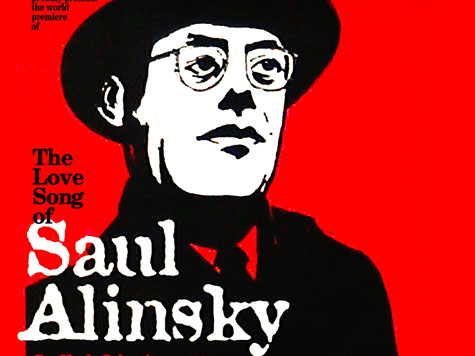Throughout Barack Obama’s campaign for the presidency and his subsequent time in that office, two things have been said again and again: 1. He has a grudge against America. 2. He takes his marching orders from Saul Alinsky (1909-1972), particularly as encapsulated in the book “Rules for Radicals.”
Anyone who listens to Rush Limbaugh, Sean Hannity, or Mark Levin regularly is going to hear point one frequently. For all three men, to the chagrin of their critics, have relentlessly warned Americans that Obama believes it’s time for this country to eat a little humble pie: that it’s time to put away talk of America the exceptional and bring on America the apologetic.
As Limbaugh in particular has said:
Obama has a chip on his shoulder about [this] country. He doesn’t think of it as great…He thinks of it as criminal in many ways, as guilty in many ways. He thinks our superpower status was the result of a theft [of the] resources and ideas from other nations all over the world…And I think Obama wants the people of this country to find out what it’s like to live the way he thinks we have forced other people around the world to live.
So there’s point one: the assertion that Obama has a grudge against this country. And this leads to point two, and the question of what role Mr. Alinsky’s writings and overthrow tactics have had on our president. (By “overthrow tactics” I mean Alinsky’s methods for not only persuading but also enabling the “have-nots” in our society to overthrow the haves and take away their power.)
In a National Review column, dated May 14, 2009, we see that “Obama’s mentors from his Chicago days studied at a school Alinsky founded, and they taught their students the philosophy and methods of one of the first ‘community organizers.'” That same column cites a photo that was on Obama’s presidential campaign website: a photo that showed “Obama in a classroom teaching students Alinskian methods.” It showed Obama standing in front “of a blackboard on which he’d written ‘Relationships Built on Self Interest,’ and illustrated by a diagram of the flow of money from corporations to the mayor.”
His immersion in Alinsky’s teachings is certain from the scenario relayed in National Review. And anyone who’s read “Rules for Radicals” and noted the number of times “change” and some variant of “community organizer” appear may have even asked themselves: Did Barack Obama write this book? Of course he didn’t. But his language and actions so perfectly mirror the language of Alinsky and the actions Alinsky promoted that it’s hard to tell the one community organizer-turned-president from the other community organizer-turned-cult hero.
For example, from “Rules for Radicals,” consider Alinsky’s words of wisdom for emerging community organizers:
[You must help] the people in the community…feel so frustrated, so defeated, so lost, so futureless in the prevailing system that they are willing to let go of the past and chance the future. [An] organizer must shake up the prevailing patterns of their lives–agitate, create disenchantment and discontent with the current values, to produce, if not a passion for change, at least a passive, affirmative, non-challenging climate. [You must] fan the embers of hopelessness into a flame of fight.
These are the kinds of things Obama was reading when he poured through the pages of “Rules for Radicals,” and these are the kinds of things he would have been taught by the community organizers who trained him. And what have Obama’s tactics as President been to this point, if not tactics of playing one class against another to raise levels of frustration and of creating the very disenchantment about which Alinsky wrote, in order to nurture a passion for change?
Alinsky taught him well. And Alinsky’s son was the first to admit it, when he wrote a letter to the Boston Globe in praise of Barack Obama following the 2008 Democrat National Convention:
Barack Obama’s training in Chicago by the great community organizers is showing its effectiveness. It is an amazingly powerful format, and the method of my late father always works to get the message out and get the supporters on board. When executed meticulously and thoughtfully, it is a powerful strategy for initiating change and making it really happen. Obama learned his lesson well.

COMMENTS
Please let us know if you're having issues with commenting.